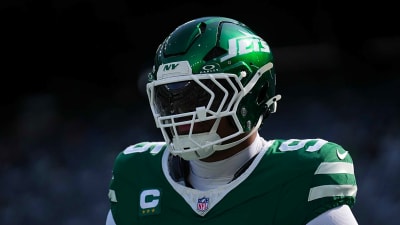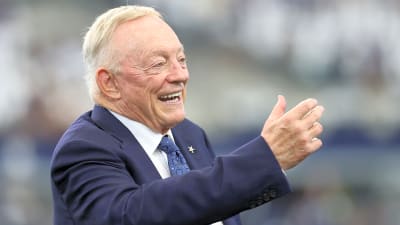
Pete Alonso’s market hasn’t come together the way he and agent Scott Boras had hoped just yet, though there’s still more than a month until pitchers and catchers report to spring training, leaving ample time for a deal to come together and still afford Alonso a normal spring training. One element that’s likely impacted things, as with any high-profile free agent, is trepidation from teams in terms of asking price. Mark Feinsand of MLB.com has previously suggested that the Boras Corporation has used contracts like Prince Fielder (nine years, $214M) as a point of comparison in negotiations.
Boras firmly pushed back on that this morning in comments to SNY’s Andy Martino. Boras tells Martino that a “10-year-old contract” like Fielder’s simply “is not relevant to the current Alonso negotiations.” (Fielder’s contract is actually 13 years old, though that only further hammers home the point Boras is making.)
Even with that pushback, it’s likely that years have been the holdup in talks regarding Alonso. The Mets famously offered him a seven-year, $158M extension in 2023. That included Alonso’s final arbitration season (2024), wherein he was paid $20.5M. He’d need to top $137.5M over the next six seasons in order to come out ahead in that bet on himself.
Of course, that doesn’t all need to come in the form of one contract. We’ve seen plenty of free agents in the past find more tepid interest than anticipated in free agency, take an opt-out-laden deal, and come out ahead over the course of multiple contracts. It’s not the ideal course of action for most players, but it can certainly work to the player’s benefit.
More specifically, that course of action has been common for both high-end and mid-level Boras clients. It doesn’t always work — just ask Jordan Montgomery — but there are plenty of success stories.
Matt Chapman, Blake Snell, Carlos Rodon and Carlos Correa are all recent examples. Chapman took a three-year, $54M deal with opt-outs in San Francisco and mashed his way into a $151M extension. He’ll ultimately earn $169M over a seven-year term. Snell took two years and $62M from the Giants last winter after reportedly rejecting a Yankees offer in the $150M range. (He’s since contested the number was well shy of that.) He opted out and landed $182M from the Dodgers, bringing his six-year earnings to $214M (albeit with nearly a third of it deferred). Rodon opted out of the second season of his own two-year, $44M deal with the Giants and cashed in with $162M in the Bronx. Correa signed a three-year, $105.3M deal in Minnesota, opted out and went through a strange free agent odyssey that still resulted in an additional $200M guaranteed from Minnesota, even after a pair of failed physicals in San Francisco and Queens.
It’s not yet clear whether Alonso will ultimately go that route, but former Mets GM Jim Duquette (2003-04), now with MLB Network Radio on SiriusXM, reports that Boras and Alonso have pitched an opt-out laden three-year deal to the Mets — and the Mets alone. Even with that reported offer from the player’s camp, Duquette suggests no deal is close for now.
A three-year deal for the Mets — something in the Cody Bellinger mold — would make plenty of sense for both parties. New York would retain the NL home run leader dating back to Alonso’s big league debut and do so without needing to commit long-term to a 30-year-old first baseman who offers minimal defensive/baserunning value. Pairing Alonso and Juan Soto in the heart of the Mets’ order would be formidable.
For Alonso, he’d secure multiple seasons at an annual rate presumably higher than anything available to him on a lengthier deal. Bellinger’s $80M deal guaranteed him $60M over the first two seasons of the three-year term if he chose to forgo the first opt-out (which he did). An identical construct for Alonso would mean that, including the $20.5M he earned in his final arbitration season, he could have $53M from 2024-25 or $80.5M from 2024-26. If the aim is to topple the $158M he rejected in 2023 (which, again, would’ve covered the 2024-30 seasons), he’d be well on his way.
Additionally, Alonso would have the opportunity to improve on a down showing in 2024 that has surely hindered interest. The slugger didn’t have a bad season; his .240/.329/.459 slash was 22% better than the league-average, by measure of wRC+. His 34 home runs were a clear plus mark. But Alonso’s past two seasons haven’t been as dominant as he was from 2019-22 when he hit a combined .261/.349/.535 (37% better than average).
A 2025 showing more in line with that form would potentially set Alonso up for a much larger payday — and do so on the heels of a premium salary in 2025. He’d also have the benefit of reentering the open market without a qualifying offer and the associated draft pick compensation hanging over his head. Players can only receive one QO in their career, and Alonso rejected one from the Mets back in November.
More must-reads:
- Pete Alonso reportedly makes offer to Mets
- Insider addresses wild Pete Alonso contract request report amid Mets rumors
- The 'Home Run Derby champion' quiz
Breaking News
Trending News
Customize Your Newsletter
 +
+
Get the latest news and rumors, customized to your favorite sports and teams. Emailed daily. Always free!








